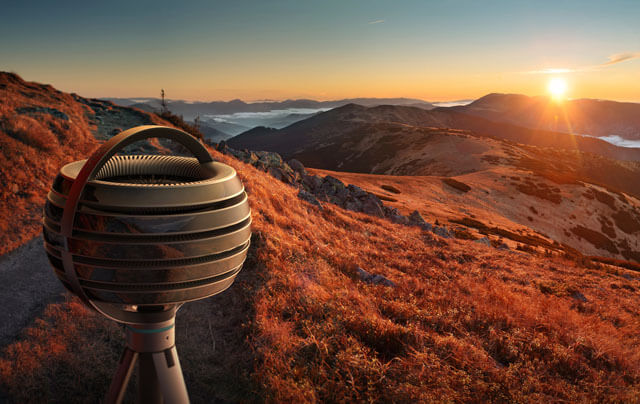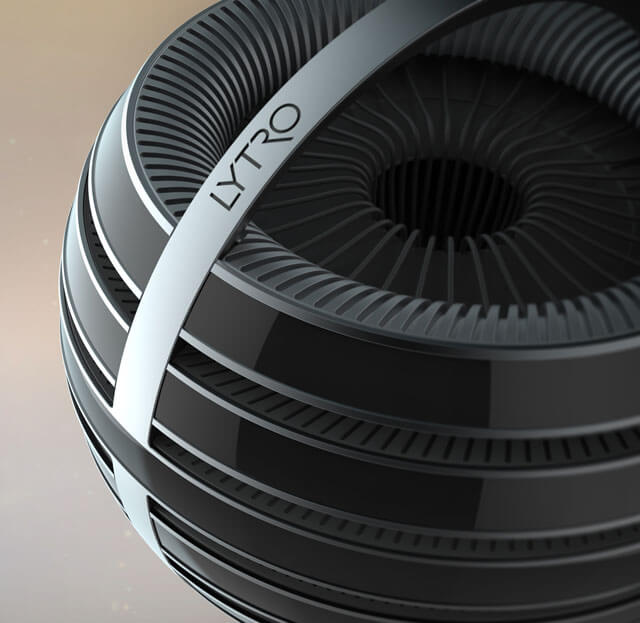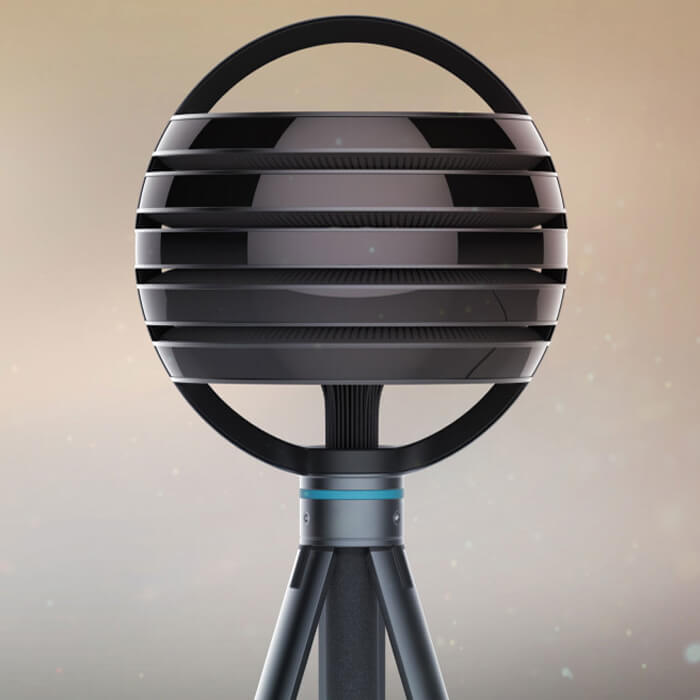Lytro’s Immerge Camera Puts a New Spin on Immersive Storytelling
Lytro has recently announced an end-to-end system that opens new possibilities for virtual reality viewers and filmmakers worldwide. The company set its sights on capturing immersive video about a year ago, and by now it has developed the Immerge camera which is described as “world’s first professional light field solution for cinematic VR.”
While other cameras capture light field data from one direction, the new ball-shaped Immerge camera gets data from every single direction at once, as 360 camera rigs do too. The so-called “six degrees of freedom” provides lifelike presence and enables viewers to “move around” inside the 3D space while they’re watching that video.
 Till now we’ve had still cameras that capture a shot on-site, with the focus and the depth-of-field being adjusted after the fact. All of a sudden, the fix-it-in-post approach has been applied to things that were never before achievable with a single camera. In this regard Lytro’s creation can become a real breakthrough.
Its centerpiece is the Immerge camera, a five-ring globe of light field cameras and sensors to capture video, which Lytro calls a “light-field volume.” Unlike existing VR camera rigs that capture a static 360-degree image, the Immerge camera will let you move around a bit within the scene. Using the light field data, you’ll be able to create virtual views of a location from any point in the space, facing any direction. Lytro’s CEO Jason Rosenthal dwells on the potential of this innovation:
Till now we’ve had still cameras that capture a shot on-site, with the focus and the depth-of-field being adjusted after the fact. All of a sudden, the fix-it-in-post approach has been applied to things that were never before achievable with a single camera. In this regard Lytro’s creation can become a real breakthrough.
Its centerpiece is the Immerge camera, a five-ring globe of light field cameras and sensors to capture video, which Lytro calls a “light-field volume.” Unlike existing VR camera rigs that capture a static 360-degree image, the Immerge camera will let you move around a bit within the scene. Using the light field data, you’ll be able to create virtual views of a location from any point in the space, facing any direction. Lytro’s CEO Jason Rosenthal dwells on the potential of this innovation:
 There’s another huge difference in directing VR video. Current VR camera rigs capture video in all directions, so the crew can’t stand on the set without being part of the show. The Immerge system, though, is designed to be mounted on a tripod or a dolly and then to be operated remotely via a tablet or phone, so that cameramen can make adjustments without being in the scene.
In addition to the camera, the Immerge also comes with software solutions for creating cinematic VR. There’s a server for storage and processing (each server holds about an hour of 360-degree light-field video), a Light Field Editor program for integrating existing visual effect tools, and a Player that allows the created content to be viewed through VR headsets and platforms. Jason Rosenthal stresses out the obvious pros of the new camera:
There’s another huge difference in directing VR video. Current VR camera rigs capture video in all directions, so the crew can’t stand on the set without being part of the show. The Immerge system, though, is designed to be mounted on a tripod or a dolly and then to be operated remotely via a tablet or phone, so that cameramen can make adjustments without being in the scene.
In addition to the camera, the Immerge also comes with software solutions for creating cinematic VR. There’s a server for storage and processing (each server holds about an hour of 360-degree light-field video), a Light Field Editor program for integrating existing visual effect tools, and a Player that allows the created content to be viewed through VR headsets and platforms. Jason Rosenthal stresses out the obvious pros of the new camera:
 By all means, this camera is intended for professional video production. In the foreseen future even more amazing applications are planned: the ability to refocus within a scene based on a headset’s eye-tracking, instantaneous 3D-modeling and realistically blending CG content with live video.
Buying it will cost several hundred thousands of dollars when it’s available in the first half of 2016. In the world of filmmaking, most professional equipment is rented, and Rosenthal says rental plans for a few thousand dollars a day are in the works. You can currently apply for access to a prototype system on the Lytro website and have a touch of the camera that may revolutionize how virtual reality content is captured. Check out a video that introduces the Lytro Immerge camera in all its glory to make up your mind:
Lytro Immerge from Lytro on Vimeo.
By all means, this camera is intended for professional video production. In the foreseen future even more amazing applications are planned: the ability to refocus within a scene based on a headset’s eye-tracking, instantaneous 3D-modeling and realistically blending CG content with live video.
Buying it will cost several hundred thousands of dollars when it’s available in the first half of 2016. In the world of filmmaking, most professional equipment is rented, and Rosenthal says rental plans for a few thousand dollars a day are in the works. You can currently apply for access to a prototype system on the Lytro website and have a touch of the camera that may revolutionize how virtual reality content is captured. Check out a video that introduces the Lytro Immerge camera in all its glory to make up your mind:
Lytro Immerge from Lytro on Vimeo.

The Immerge camera taking a shot of the mountain panorama.
Photo credit: Lytro
Each one of the camera layers represents a very densely packed wave of light-field sensors. It’s a 360-degree light-field capture. And then by stacking five on top of one another, we’re giving you a capture of the full light-field volume. You’ll get roughly a cubic meter of area that you’ll be able to fully capture the set of rays within that. And then, from a consumer experience, you’ll be able to move around within that volume and have the world react accordingly.That capability alone is a mind-boggling leap for VR filmmaking, and the Immerge announcement is timed well in preparation for the next generation of VR hardware. Lytro’s video will be compatible with the Oculus Rift, HTC Vive, and Sony PlayStation VR that are all slated for release next year. Until now, those upcoming positional-tracking headsets have suggested a big, new leap forward for immersive gaming, but not necessarily for video. This trend is soon to be changed.

The insides of Lytro's Immerge camera
Photo credit: Lytro
It’s very much this system that will capture, edit, and process once, but it’ll render and play back in any device. This is something that we’ve heard a lot of excitement about from our partners. Today, they have to go through a very different production workflow depending on what device they’re building for.

The Immerge camera taking photos of people passing by.
Photo credit: Lytro
Have you liked this post? Subscribe to FDDB Newsletter
Start the experience!
Not yet registered?
Sign up now, it's free!
Sign up now, it's free!





